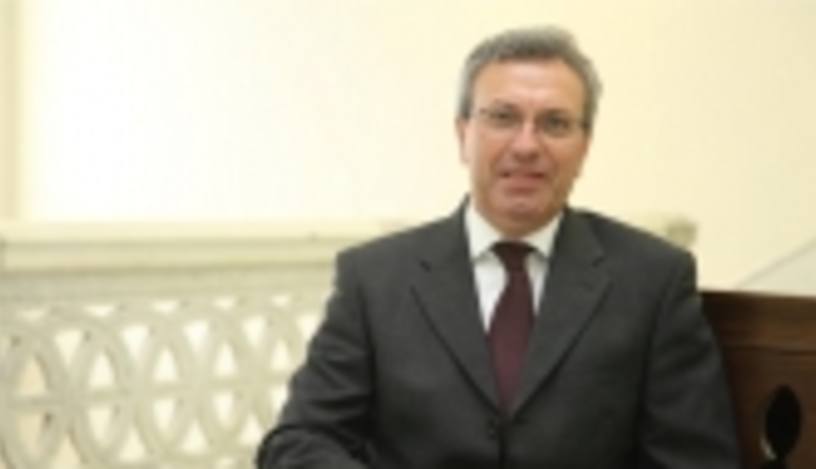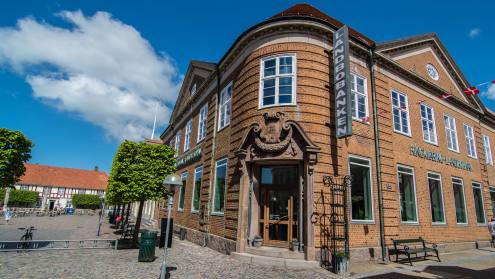Adnan Bali became chief executive officer of Isbank in Turkey in April 2011, but he is certainly not a newcomer to the bank. With some 25 years' experience at Isbank ranging from branch management in Istanbul to the treasury department, he says he knows the styles of just about every team in the bank.
“There is no direct entry to management at Isbank, we are a close family, and that has contributed to the stable and sustainable quality of management at the bank,” he says.
Editor's choice
Previous CEO Ersin Ozince epitomised that stability, steering the bank for almost 13 years, through the Turkish financial crisis and currency devaluation of 2000 to 2002. Mr Bali appears to have taken charge at another time of stress and risk for the bank, and he is watching events in the eurozone as closely as anyone.
“Turkey has very quickly diversified its export base away from the EU to new markets such as the Middle East, and there has been a 10% decline in Europe’s share of our exports in just 10 years. But if the eurozone crisis intensifies, there will be [a bigger] effect on the Turkish economy via the trade channel, as Europe is still a major export destination,” he says.
Position of strength
However, the Turkish banking sector has transformed itself over the past decade, even more dramatically than the export sector. Mr Bali points out that according to the market observations in 2001, the country's banking sector had an open net short dollar position of about $30bn, which was three times the size of aggregate banking sector capital. If the ratio of the foreign currency net short position to the capital of the banking sector remained at the same level today as in 2001, the 15% to 17% depreciation of the Turkish lira during 2011 would have wiped out about half the banks’ equity.
Instead, the sector’s risk management is vastly improved, with no net short foreign exchange position, and total bank capital has reached $85bn. Mr Bali adds that the Turkish bank regulator, BRSA, has played its part, building an extensive data collection process to facilitate thorough systemic surveillance. This strength is part of the reason why the Central Bank of the Republic of Turkey (CBRT) has been able to pursue a deliberate weak lira policy during 2011 by cutting interest rates to discourage speculative inflows.
At the same time, the CBRT, the BRSA and the Turkish finance ministry all sought to stem any overheating risks by urging a 25% cap on bank lending growth in 2011, although no direct measures to enforce this were ever enunciated. The CBRT also tightened deposit reserve requirement ratios (RRRs) as a way of curbing lending growth. Initially banks expressed concern about the increased cost of deposit funding that this caused, and Mr Ozince warned that it might create unfair competition for foreign banks that could tap cheaper funding from their parent company.
If the eurozone crisis intensifies, there will be [a bigger] effect on the Turkish economy via the trade channel, as Europe is still a major export destination
The issue has become less intense amid growing signs that the Turkish economy will slow next year. The Monetary Policy Committee at the CBRT kept rates on hold in September 2011, noting in its press release that “recent data releases suggest that there will be a notable reduction in economic growth in the second half of the year”.
Stable funding
Mr Bali is in any case more sanguine about higher deposit RRRs than his predecessor. Foreign banks, some facing liquidity pressures in their home markets, are actually paying up to obtain deposit funding from less leveraged Turkish customers. With the largest share of deposits in the Turkish market – just under 14% – and a loan-to-deposit ratio of just 85%, Isbank has a very stable funding position.
This balance sheet strength has enabled the bank to tap cheaper international funding as well; most recently a $1.2bn syndicated loan which Mr Bali says remained tightly priced, at 100 basis points over the interbank offered rate. The bank is also evaluating market conditions to continue its diversified payment rights securitisations, a significant source of funding prior to the crisis.
“For a bank with high-level international recognition such as Isbank, it is possible to raise foreign exchange-denominated funds in different markets, and we have maintained non-deposit resources including bonds, loans, money-market and repo financing,” says Mr Bali.
Margins declining
Even so, the combination of tighter reserve requirements and a highly competitive market has started to bite. Net interest margins for Turkey's banking sector as a whole have fallen by 150 basis points to about 4% in a relatively short space of time.
In addition, many leading banks made significant profits from the tightening yields on Turkish government bonds and bills in 2010. This is a one-off benefit not likely to be repeated now the CBRT’s benchmark interest rate is at a record low of 5.75%. Securities comprised 34% of Isbank’s total portfolio at the end of 2010, and this had fallen to 28% by June 2011, while trading income was down 71% year on year in the first half on 2011.
Mr Bali anticipates that the tougher environment will drive some consolidation among smaller Turkish banks. Isbank itself is very solid, with a capital adequacy ratio of 16.1% in the first half of 2011. Mr Bali says the bank “knows its strengths well enough to gain from challenges elsewhere in the banking sector, and we should be able to grow at the expected levels”.
But the drag on Isbank’s earnings from the tougher conditions is apparent. Its net interest margin declined from 4.54% at the end of 2010 to just 3.02% in the first half of 2011, while return on equity slipped from 19.6% to a still-impressive 16.9% in the same period.
Like the banks, Turkish companies have low leverage and high capitalisation, and most households also have low debts. We have a young and growing population with a dynamic business sector, these are all underexploited resources for the banks
Constructive approach
In this context, Mr Bali is focusing on repricing the loan portfolio and improving operational efficiency. Close scrutiny on asset quality will also be crucial, and here Isbank has enjoyed notable success.
Net non-performing loan (NPL) growth was negative in 2010 and the first half of 2011, as recoveries on existing NPLs outstripped new NPL formation. This has left the overall NPL rate at 2.8% in the second quarter of 2011, compared with 4.8% in the same period of the previous year. The small and medium-sized enterprise sector has a higher rate than the aggregate level, at 4.7% in the second quarter of 2011, and 6.1% in 2010, but this is precisely the area where Isbank has focused its recovery efforts.
“During the crisis period, we have restructured the loans of 13,000 commercial customers for about Tl1.3bn ($705.3m) to allow these companies to begin repaying the loans. This is the moment where the strength of the relationship and the health of the bank are tested. A strong bank is able to absorb the temporary cash-flow problems of its clients, taking a constructive approach to preserve the accumulated wealth of the system,” says Mr Bali.
Growth potential
As net interest margins are compressed, fee and commission income will be another important component to retain profitability. Mr Bali says Isbank’s management has focused on this item, aware that the bank's non-interest income has been outperformed by some of its competitors. To address this, the bank is implementing a 'fee factory' concept that will include authorisation for branches to take a flexible approach to maximising fees depending on analytical models based on customer value.
“We want to have transactions with customers based on overall profit per customer, so there is the potential to transfer revenues between different items of customer business. And the data from the fee factory will provide branch managers with decision-making discipline,” says Mr Bali.
Credit cards, unknown in Turkey just a decade ago during the era of high inflation and government deficits, are now a growth area that will inevitably generate more fees. But Mr Bali notes that Turkish banks also offer many other services for free that peers in other markets would charge for. As the retail banking market matures and interest rates remain far lower, that approach may begin to change.
This does not mean that he is in any sense ruling out interest income as a source of growth for the bank. Quite the reverse. Mr Bali aims to increase market share in most segments to about 15%, from 12% to 13% at present. But he also believes there will be opportunities for Isbank without having to fight for market share.
“Like the banks, Turkish companies have low leverage and high capitalisation, and most households also have low debts. We have a young and growing population with a dynamic business sector, these are all underexploited resources for the banks,” he says.
He adds that the bank aims to stay close to its corporate clients when they expand outside Turkey. Isbank is particularly active at present, opening representative offices or acquiring subsidiaries in Turkey’s neighbours and beyond. In October 2010, Isbank completed the $40m acquisition of Bank Sofia in Russia, an increasingly important energy trading partner for the Turkish economy.












